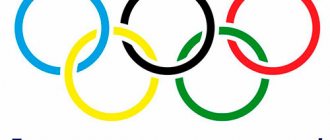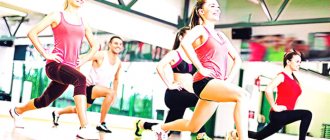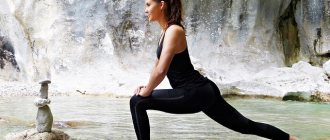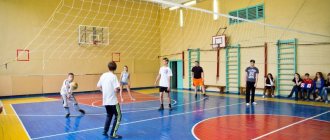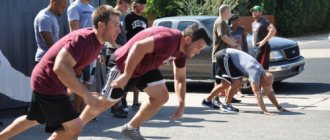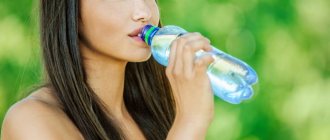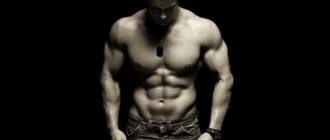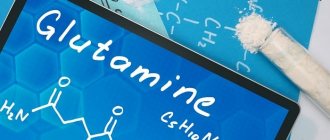What is physical culture? Everyone is familiar with this lesson from school, but what exactly does this concept of physical education mean? Are you really interested? Then read the article, we will tell you about everything related to physical education in order. Physical culture is one of the areas of social activity that is aimed at improving the physical qualities of the body and strengthening the muscle corset through active movement. ...
Physical education always helps you stay healthy and full of vitality and energy. And as you know, a healthy mind in a healthy body! Exercises act on the cerebral cortex , causing feelings of satisfaction and joy, and put our nervous system in order.
This is interesting: men's muffler - what is it?
It is necessary to engage in physical activity all your life - from your first days to old age. Classes must be regular. Gradually you need to increase the load, but so that it does not cause you discomfort. There is no need to work to the limit of your capabilities and perform set after set until exhaustion. Exercise for fun and for your health!
Physical education educates, prepares and
develops a person’s physical capabilities . Do you think sport and physical education are identical concepts? Surely your answer was yes. But no, physical education is a general concept, designed to simply improve health, and sport is a part of physical education, aimed at achieving maximum results by any means necessary; consists of training and competitions.
Physical culture is...
The Federal Law of the Russian Federation “On Physical Culture and Sports” states that:
physical culture is part of the culture of society, which is a set of values and knowledge created and used for the purpose of physical and intellectual development of a person’s abilities, improving his physical activity, developing a healthy lifestyle, and social adaptation through certain education and training.
The Big Encyclopedic Dictionary gives the following definition of the concept.
Physical culture is an area of social activity designed to preserve and strengthen health, develop a person’s psychophysical abilities in the process of conscious motor activity.
Simply put, physical education is the performance of various exercises and a set of other activities, the purpose of which is to strengthen the muscular corset of the body and improve overall health.
The main means of achieving goals are exercises for various muscle groups and sports games. Also used:
- forces of nature (water, sun rays, air and other environment);
- food regimen (regular and proper nutrition);
- hygiene (cleanliness of the body, air and clothing in which classes are conducted);
- rest and restoration of the body after heavy loads (recreation).
Physical culture reflects the achievements of society in improving the psychophysical and moral qualities of each individual person. The level of their development determines the personal values of physical education.
Content
- Who and when invented physical education.
- The origins of sport in Ancient Greece.
- The main differences between sports and physical education.
- What does the concept of physical culture include?
- What is physical education.
- Why do we need physical education? 10 reasons to exercise.
This is interesting: Ivan Aivazovsky - a brief biography.
Relevance of the issue
When considering the role of physical education in human life, we should recognize the uniqueness of physical education as a social phenomenon. In many ways, it represents the link between social human development and biological progress. This kind of culture is the first to appear among all aspects of culture in principle; it is precisely this that is basic for any representative of the human species. One of the main characteristics of physical education is dualism. In many ways, it is for this reason that it is customary to talk about a strong dual influence on a person: both on the person’s body and on his psyche.
Assessing the role of physical education in human life in a historical context, it is worth noting the fact that since ancient times physical education has been a reflection of the practical needs of a person and society as a whole. People needed adequate preparation, and this was especially expressed in raising children and youth. However, an equally important aspect of physical education is the possibility of accustoming an adult to work through such activities. The progress of our society is closely related to the development of educational systems and the establishment of educational programs. Taking this factor into account, we can safely talk about physical education as one of the basic phenomena that helps to develop human skills and abilities (motor, reactions).
Improving the metabolic process.
Regular exercise has a significant impact on metabolism (metabolism), i.e. on the chemical processes occurring in the body. Everyone has probably noticed how training changes a person’s appearance - the figure becomes slimmer, the fullness gradually disappears. The blood levels of cholesterol, triglycerides and other substances that contribute to cardiovascular diseases change for the better. The metabolism of sugar from food improves, and diabetes (a common problem in older people), which is closely associated with the appearance of obesity, is less likely to develop. People suffering from diabetes, but performing feasible physical activity, need smaller doses of medications.
Types of physical culture
Physical culture is divided into several types, which correspond to various areas of its application in society:
- Basic. Aimed at obtaining basic motor skills and abilities that are necessary in everyday life. Available for purchase in preschools and schools.
- Health and rehabilitation. Aimed at strengthening and improving the condition of all body functions. It is divided into hygienic (this includes walks, morning exercises) and therapeutic (physical therapy), which is used for various diseases or after injuries.
- Applied. Aimed at optimizing the conditions for the development of physiological abilities and mental qualities of a person in the process of professional activity. For example, physical education, industrial gymnastics, active recreation on weekends.
- Recreational. It has a positive effect on the current functional state of the body (active tourism, sports games during recreation).
- Sport. It developed in the form of competitive activity in various sets of exercises. Includes organizing and conducting preparatory training sessions.
Although sport is an integral part of physical culture, it goes beyond it. For example, aircraft modeling, checkers, chess or radio sports cannot be classified as physical education, because they lack motor activity, and the result depends not so much on a person’s physical abilities, but on mental ones.
Sports and physical education differ in their goals. If physical education is done to improve health, improve the body, and acquire vital motor skills, then in sports the main thing is to win competitions and achieve the best possible results (set personal or world records) in a given sport.
Motivation for sports
Professional sport is hard work, where, gritting your teeth, you need to work for results every day. It is foolish to assume that running around the field after a ball, trying to push it into the goal, or skating on an ice rink, juggling a puck with a stick, is easy and within the power of everyone. Sometimes it’s hard to force yourself to do even basic exercises, let alone daily intense workouts. Based on this, it becomes clear that motivation plays an important role in the training process. Many people don’t play sports not because they don’t have time or money, but because they can’t find the strength within themselves, muster the willpower and just start doing something.
Remember, the main thing is to overcome your laziness and take the first step: start training. After physical activity enters the usual rhythm of life, it will not seem like something difficult and impossible. Sport gives you discipline, and being organized will help you in your everyday activities.
A wide variety of things around us can inspire and motivate us to exercise. This could be music and other forms of art, examples of successful people, strong feelings. You can read more about inspiration in one of our blog articles.
What does the concept of physical culture include?
Physical education consists of a number of components, without which its existence is impossible. Main types:
- physical recreation;
- physiotherapy;
- sport;
- for adaptation (adaptive);
- physical education of adults and preschool children;
- physical education for pregnant women;
- applied physical training.
Physical recreation
Physical recreation is motor active recreation and entertainment using physical exercises, outdoor games, various sports, as well as natural forces of nature, as a result of which pleasure is obtained and good health and mood are achieved, mental and physical performance is restored.
Physiotherapy
This is a whole section of medicine. Used to restore physical capabilities after severe injuries or for health reasons. Physical therapy is prescribed by a doctor during the rehabilitation period. These are special physical exercises and loads that will help restore the normal functioning of the body as a whole. It is also prescribed for preventive purposes.
Gymnastic therapeutic exercises are effective means of therapeutic exercise.
Physical education for pregnant women
Women need exercise even while expecting a baby and right up to childbirth.
Childbirth is a huge amount of physical work and extreme stress for the body, so you need to prepare for it in advance. And moderate physical activity will help with this. There are a number of contraindications to performing exercises:
- uterine tone,
- bloody issues,
- placenta previa,
- past pregnancy failures.
Attention! Only your local doctor will be able to prescribe a set of gymnastic exercises for pregnant women! Therefore, be sure to consult with him!
Sport
This is a type of human physical activity that includes a set of strict rules, regular training and competitions. Achieving maximum results is an integral part of sports. There are a huge number of sports. The most popular are:
- football;
- basketball;
- volleyball;
- hockey;
- swimming;
- tennis;
- rhythmic gymnastics, etc.
Which sport should I choose?
Physical activity can be different: some like football, others like alpine skiing, others like boxing, and others like chess. Recently, it has become fashionable to go to the gym and do fitness. In addition, different sports require different conditions. When choosing a sport, it is important to proceed from several important aspects, the main one of which is subjective interest. What do you like most, what is your soul passionate about? This is very important, because in order to get both results and satisfaction, you need to love what you do. Don’t be afraid to experiment – regardless of age, you can try to master any sport!
The second important nuance is whether there are any health contraindications. It is important to consult a doctor and undergo the necessary tests if you suspect that sport may harm your health. But it can be noted that sometimes the opposite happens, and in medical practice there are cases when doctors recommend sports for patients with illnesses or after injuries. Another aspect is time and money. When choosing a sport, honestly answer the question of how much time and effort you are willing to devote to your future activity and how much you are willing to pay for it. Conditions vary: for example, rock climbing, tennis or judo will most likely require material costs from you. However, if your goal is to gain muscle mass and get pumped up, you don’t have to go to the gym and spend money. A similar result can be achieved by doing push-ups at home, doing exercises on the horizontal bar and parallel bars, which are found in almost every yard. To stay fit and keep your body in good shape, you can do a set of simple exercises at home for free.
If you still haven’t made your choice, we recommend that you pay attention to some types of activity that do not require special conditions.
Improving the efficiency of the cardiovascular system.
Diseases of the cardiovascular system, mainly angina and stroke, are the cause of death in 50% of cases in people of any age. Physical exercise has a positive effect on the efficiency of this system. Under the influence of physical education, the heart first of all becomes much more efficient. In young people, as a result of regular exercise, the amount of blood ejected by the heart with each beat increases and the size of the heart increases accordingly. In people over 40, the size of the heart does not increase from regular exercise, but blood is pumped out more energetically due to improved functioning and strengthening of the heart muscle. When performing any load, the heart of a trained person beats slower. The maximum performance of such a person is also higher, since a trained heart has greater reserve capacity. Physical exercise is also beneficial for the entire circulatory system. Blood flows to the muscles enriched with oxygen, which also increases performance.
Applied physical education
Applied physical culture is a specialized methodology. What this is can be easily understood by observing how the method is used in practice.
With its help, muscles are restored, active rest allows you to relieve the tension received during a long working week. Typically, such physical education is included in the compulsory curriculum when studying in institutions with a military bias.
Sailors, firefighters, and the Ministry of Emergency Situations must, in addition to professional activities, have excellent physical training.
There are several aspects that characterize a discipline. The simplest of them are the basic ones. These are the ones taught in school. At a young age, the foundation for further achievements is laid.
After this, you should move on to achieving higher results. In this vein, children's and youth sports are distinguished, and then mass and individual sports.
There is an applied and professional culture that allows you to master a certain profession. For this direction, the use of slightly different methods is practiced; it is distinguished by a more thorough study of achievements.
Health orientation is also included and is aimed at strengthening the functionality of the body. At the same time, do not forget about the hygiene component, which includes gymnastics, daily warm-ups, adherence to diet and sleep. https://www.youtube.com/embed/q22irVrKM7I
History of origin
Elements of physical culture appeared in ancient times. The living conditions of primitive people were largely determined by the ability to protect themselves and their families from wild animals, the ability to overcome natural obstacles and long distances in search of prey.
Such human qualities as strength, agility and endurance became vital.
The foundations of physical education were laid in Ancient Greece, in gymnastics, which combined ritual dancing, military training (running, swimming, javelin throwing, wrestling) and traditional rituals into a system of physical education.
The very concept of “physical culture” first appeared at the end of the 19th century in Great Britain. It did not become widespread in Western countries; it was soon replaced by the word “sport.”
In Russia, having come into use after the First World War, the term gained recognition in Soviet society and firmly entered the lexicon. Government agencies, magazines and newspapers appeared with this name:
- Institute of Physical Culture (founded in 1918);
- Supreme Council of Physical Culture (formed in 1920 under the Main Directorate of Vsevobuch (universal military training));
- the magazine “Physical Culture and Sports (FIS)” has been published since 1922;
- scientific and theoretical journal “Theory and Practice of Physical Culture” (the first issue was published in 1925).
At the same time, a physical education lesson appeared in Soviet schools and vocational schools, which is the most favorite school subject for many children and adolescents.
Morning exercises
The easiest and most affordable way to stay fit, stay alert and active, and look good is morning exercises. Recently, on many forums, charging has been criticized, largely unfoundedly. Opponents' arguments boil down to the fact that this type of exercise is a relic of the Soviet era and has an unfavorable effect on the body immediately after sleep. Any opinion has the right to exist, but it is worth bringing some clarity.
Firstly, morning exercises are not at all the same as full exercise. Exercises are performed smoothly, without sudden movements and serious physical exertion; morning exercises are designed to warm up the muscles after sleep, increase the tone of the body, and relieve drowsiness and lethargy. Secondly, doing exercises speeds up metabolic processes and promotes the production of the happiness hormone endorphin, which charges you with vigor and good mood. This is enough to devote 10 minutes to physical activity in the morning.
Morning exercise rules:
| 1 | No heavy loads or sudden movements. Since after sleep the lungs are narrowed, the heartbeat is slow, and blood circulation is reduced, you need to slowly get out of bed, walk, wash, and only then start exercising. |
| 2 | Before gymnastics, you need to ventilate the room well. It is important to breathe properly while doing exercises. Deeply, deeply, slowly. This way the lungs will smoothly return to their normal size. |
| 3 | Exercises should be done constantly, at least 6 times a week. Only in this case can a long-term positive result be achieved. |
| 4 | You cannot eat before exercising. |
| 5 | After morning exercises, it’s a good idea to take a contrast shower and rub your body with a towel. |
Here are examples of some exercises that are suitable for both adults and children:
- Exercises for the neck and head: circular rotations of the head, tilting the head up and down, turns left and right.
- Exercises for arms and shoulders: rotational movements of the shoulders alternately and together, circular movements with arms bent at the elbows, alternating quick swings of the arms: right - up, left - down.
- Leg exercises: alternately swing your legs back and forth, squats without lifting your heels off the floor.
- Exercises for the torso: put your feet shoulder-width apart, then smoothly bend forward, trying to touch your palms to the floor, perform pelvic rotations, keeping your hands on your belt.
Improving the efficiency of the respiratory system.
The activity of the respiratory system means not just inhalation and exhalation, but also the efficiency of the body’s tissues using oxygen.
Physical exercise promotes a more active occurrence of these processes. As you age, your lungs become less elastic, meaning that with each breath you take in less air than before. Regular exercise slows down this process and allows you to actively use more of your lung tissue. The performance of the body’s muscle tissues also increases, which use oxygen more efficiently in the process of oxygen exchange, or “tissue respiration.” As a result, the body is able to perform work with less effort.
Exercises for weight loss
This issue is usually of interest to women, but recommendations and weight loss programs will also be useful for men. We offer only a few techniques with video material; other similar exercises and video courses can be easily found on the Internet on your own.
Sets from leading trainers working with celebrities are especially popular now. Popular complexes, in fact, are various combinations of long-known exercises, supplemented by some author’s variations. Let's look at a few examples of such complexes:
1. Program from Jillian Michaels, trainer of Hollywood actors. She offers a cycle of exercises designed for 30 days. This complex was developed according to the author’s methodology and consists of a combination of strength, cardio exercises and abdominal muscle training, which allows you to get your body in shape in 30 days. The course consists of 3 parts, 10 days each.
2. Fitness trainer Tracy Anderson offers her vision of transforming your body for the better. According to her program, during exercise it is necessary to use not the main muscles, but auxiliary ones, which allows you to create a slim and feminine figure. Tracy Anderson's popular course is called "Metamorphoses" and is designed for 90 days. The essence of the technique is half an hour of strength training, followed by cardio dancing. This program already has many positive reviews from women from all over the world.
3. And also a complex for men. The video language is English, but the exercises are simple and clearly shown:
Particular attention should be paid to cardio training, so a few additional words should be said here:
- You don't need to train every day. According to traditional wisdom, the body needs 48 hours to rest and restore a specific muscle group. At the initial stage, you should not reduce this time. The optimal number of classes per week is 4-5 times, alternating loads on different parts of the body.
- Cardio training should not last longer than 45 minutes, since after this time it is not fat that begins to be burned, but muscle mass.
- Constantly doing the same set of workouts at the same rhythm will not give optimal results. From time to time it is necessary to change the intensity and types of exercises.
- A good workout should be high intensity, but not exhausting. If after exercise you collapse from fatigue, this means that these exercises are too hard for you, so they will not give the desired effect. It is worthwhile to objectively assess your capabilities and set realistic, achievable goals.
Reducing the risk of cardiovascular diseases.
“Cause and effect” is the relationship between physical inactivity and cardiovascular disease. The risk of cardiovascular disease in people engaged in physical labor is half that of people leading a sedentary lifestyle. This does not mean that all middle-aged employees should immediately change their professions and take up manual labor: unusual work is just as risky for them. Fortunately, being active during rest and vacation is a good preventative measure for people in sedentary professions, and the sooner they start it, the better. Although exercise helps prevent cardiovascular disease and reduces the severity of existing disease, it cannot completely eliminate its occurrence. Currently, dosed physical exercise programs are widely used throughout the world for the rehabilitation of patients who have suffered heart disease, helping them return to a full, active life.
Extending active life.
It is necessary to distinguish between the concepts of “life expectancy” and “aging”. There are many cases where people lived to be 120, 130 years old and felt good. Some were lucky enough to be born into long-lived families. Problems of longevity are especially interesting for experimental biology, but the greatest interest is in means of prolonging active life. In recent years, millions of inert people around the world began regular physical education at the age of 40-50 and now, after ten years, they maintain health and creative activity.
It is not uncommon to find 50-60 year old men and women in good shape who have maintained high physical performance, whose lungs and hearts work perfectly, and whose blood pressure is normal. They are less susceptible to mental and physical disorders than other people with poor health 20-30 years younger.
The harm of sitting for a long time
Most modern work requires a person to sit for 8-10 hours a day. This is very harmful to the body. Due to the constant bent position, some muscle groups are overstrained, while others do not receive any load. Therefore, office workers often have problems with the spine. Congestion also occurs in the pelvic organs, which is especially harmful for women, as it leads to disturbances in the functioning of the genitourinary system. In addition, the leg muscles atrophy and the capillary network contracts. The heart and lungs begin to work less efficiently.
Reducing the number of typical diseases of old age.
Some age-related diseases that are beneficially affected by physical education have already been mentioned. To these should be added diseases of muscles, joints, ligaments: rheumatism and arthritis, fibrosis, lumbago, sciatica, etc. The strength of joints and bones depends, in turn, on the elasticity of ligaments and tendons, which is improved by exercise. Poor posture limits joint mobility due to loss of elasticity in muscles and ligaments. All this significantly reduces motor activity.
Maintaining independence in daily life depends primarily on mobility, which in turn is determined by the performance of muscles, bones and joints, despite injury or illness. It has always been believed that when a young person has a disease in the muscular or nervous system, training healthy muscle groups can largely compensate for the disability. This provision applies to people of any age.
When to go for a walk
You should not go outside immediately after eating. In this case, the digestion process will be difficult. You need to wait 50-60 minutes for the first phase to complete.
You can create a physical activity regime throughout the day. For example, a short walk in the morning to cheer you up, then during your lunch break or after work. And evening, before bed. In this case, 10-15 minutes per “approach” will be enough.
If you don’t have the determination or willpower to force yourself to go outside every time, then you can get a dog. You will have to walk with her, regardless of your desire. Pets will help organize children's physical activity regime, especially if the latter prefer to spend all their free time at the computer.
Correct organization of physical activity
The optimal level of physical activity is an individual matter. Excessive or insufficient levels of activity will not give health benefits and will not bring benefits. It is very important to understand this in order to dose the load correctly.
There are several principles that will allow you to properly organize physical activity. All of them are used when building the training process. There are only three main ones:
- Gradualism. An untrained person needs to start with light loads. If you immediately try to carry a lot of weight or run a long distance, you can cause significant harm to your body. The increase in physical activity should occur smoothly.
- Subsequence. A very multifaceted principle. First you need to know the basics, or develop a base, or learn how to perform exercises correctly, and only then move on to complex elements. In short, this is the principle “from simple to complex.”
- Regularity and systematicity. If you study for a week and then abandon it for a month, there will be no effect. The body becomes stronger and more resilient only with regular exercise.
A trained body can quickly adapt to changing conditions, turn on reserves, spend energy economically, etc. And most importantly, it remains active, mobile, and therefore alive longer.
The importance of physical activity can hardly be overestimated, since it is what keeps the body in working order and allows a person to feel good.
Why do modern people move less and less?
This is due to a lifestyle that is often dictated by external conditions:
- Physical labor is used less and less. In production, people are replaced by various mechanisms.
- More and more knowledge workers.
- A large number of devices are used in everyday life. For example, washing machines and dishwashers have simplified the operation to just pressing a couple of buttons.
- The widespread use of various modes of transport has replaced walking and cycling.
- The motor activity of children is very low, because they prefer computer games rather than active games on the street.
On the one hand, the widespread use of mechanisms has made life much easier for people. On the other hand, it also deprived people of movement.
